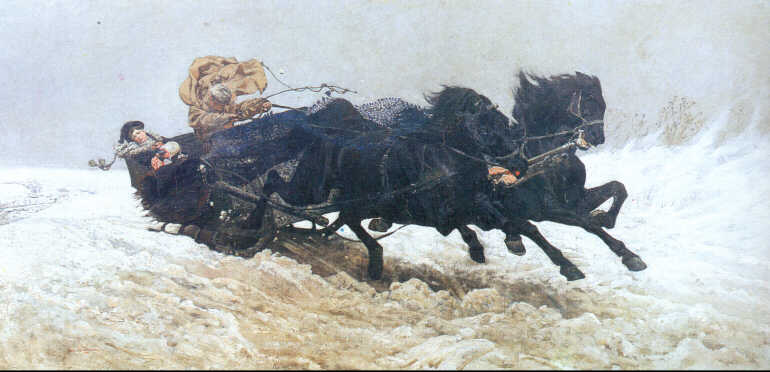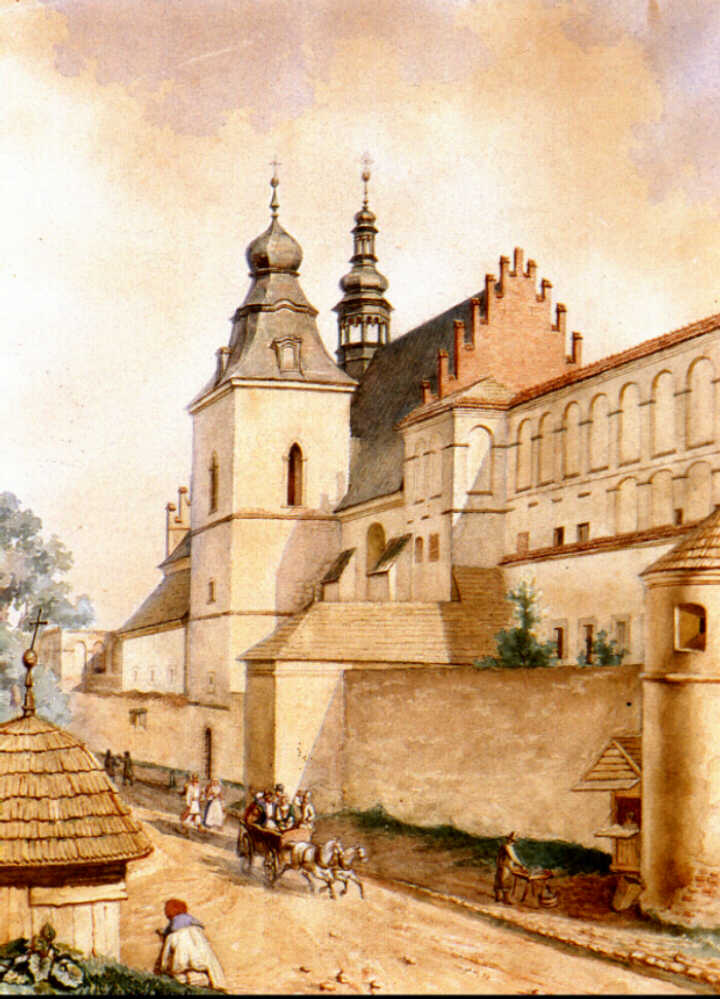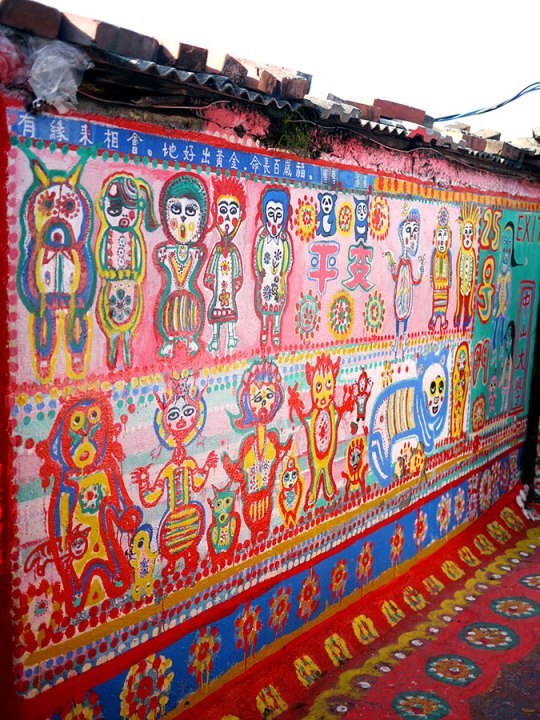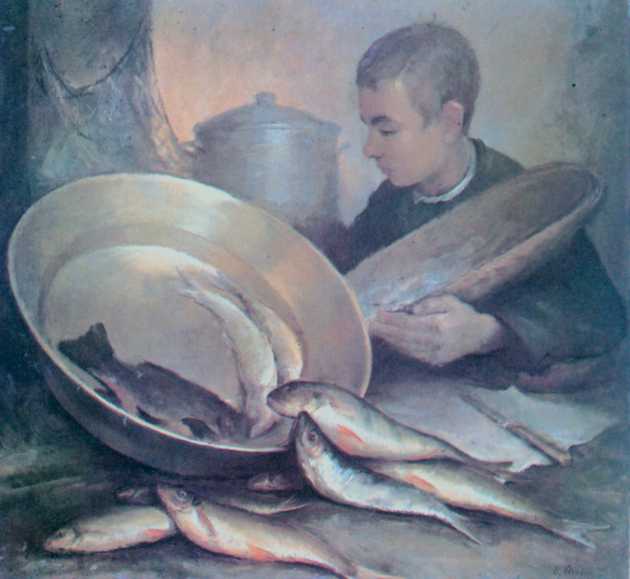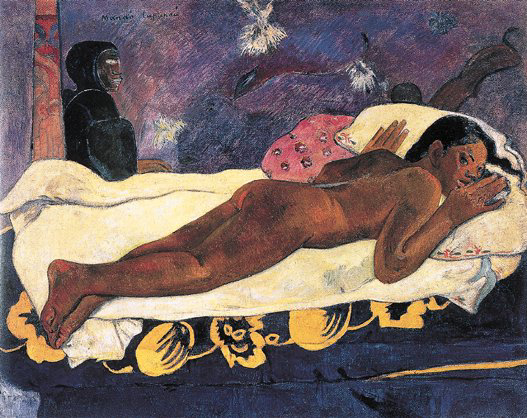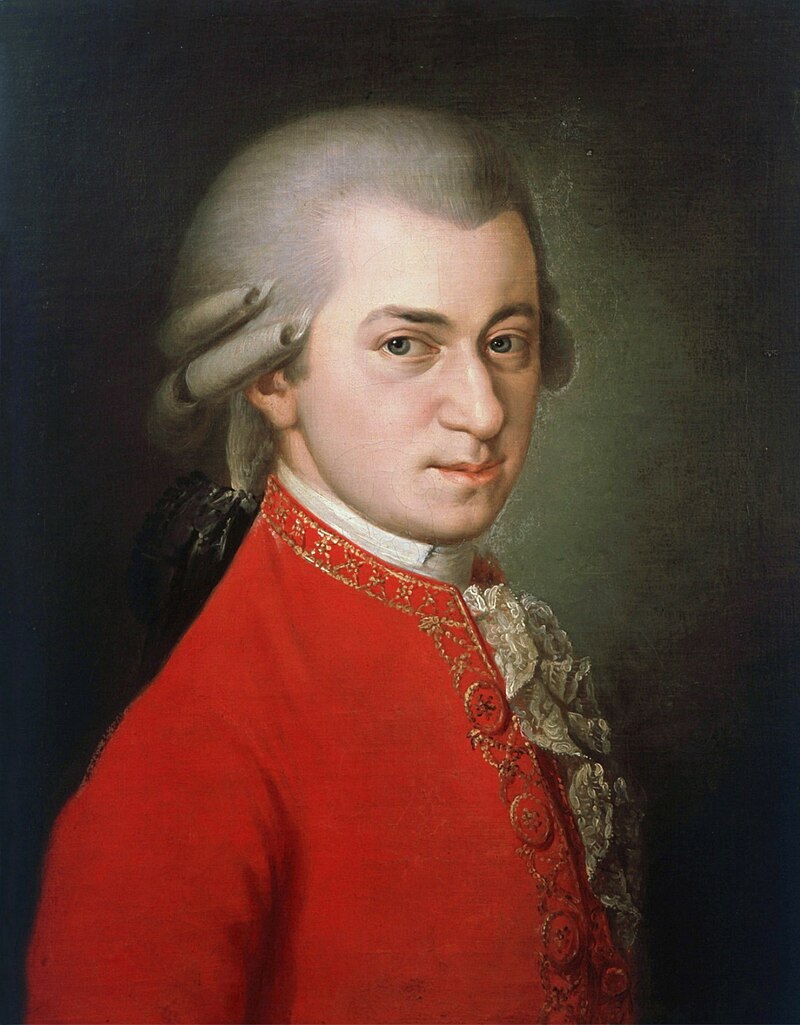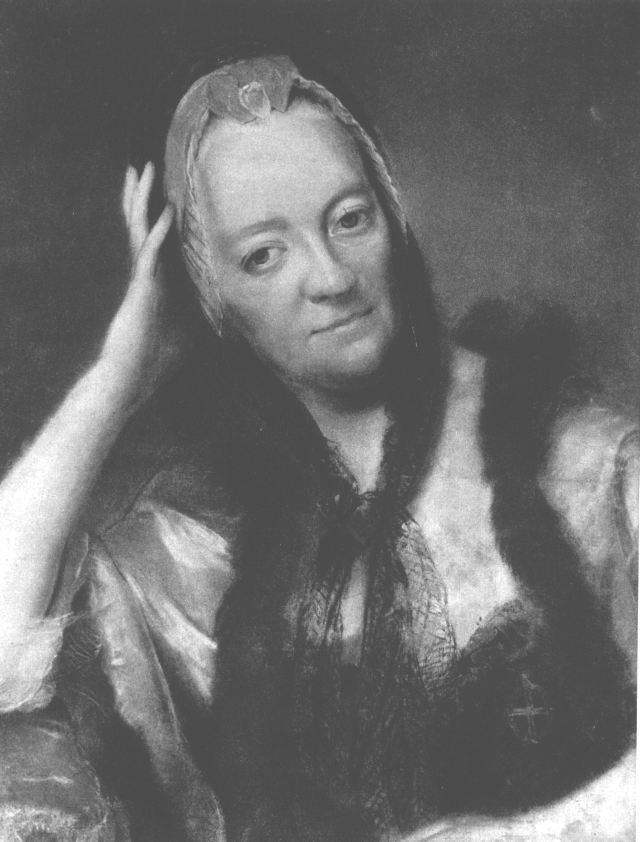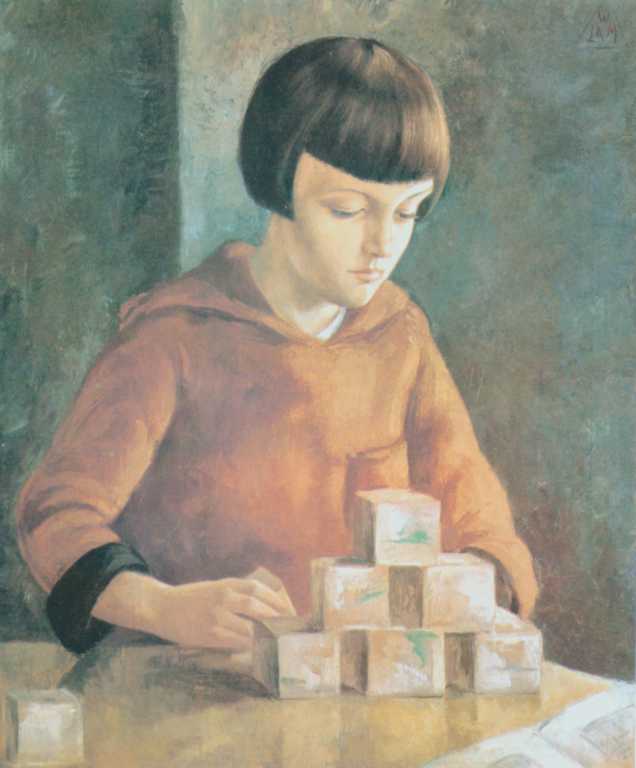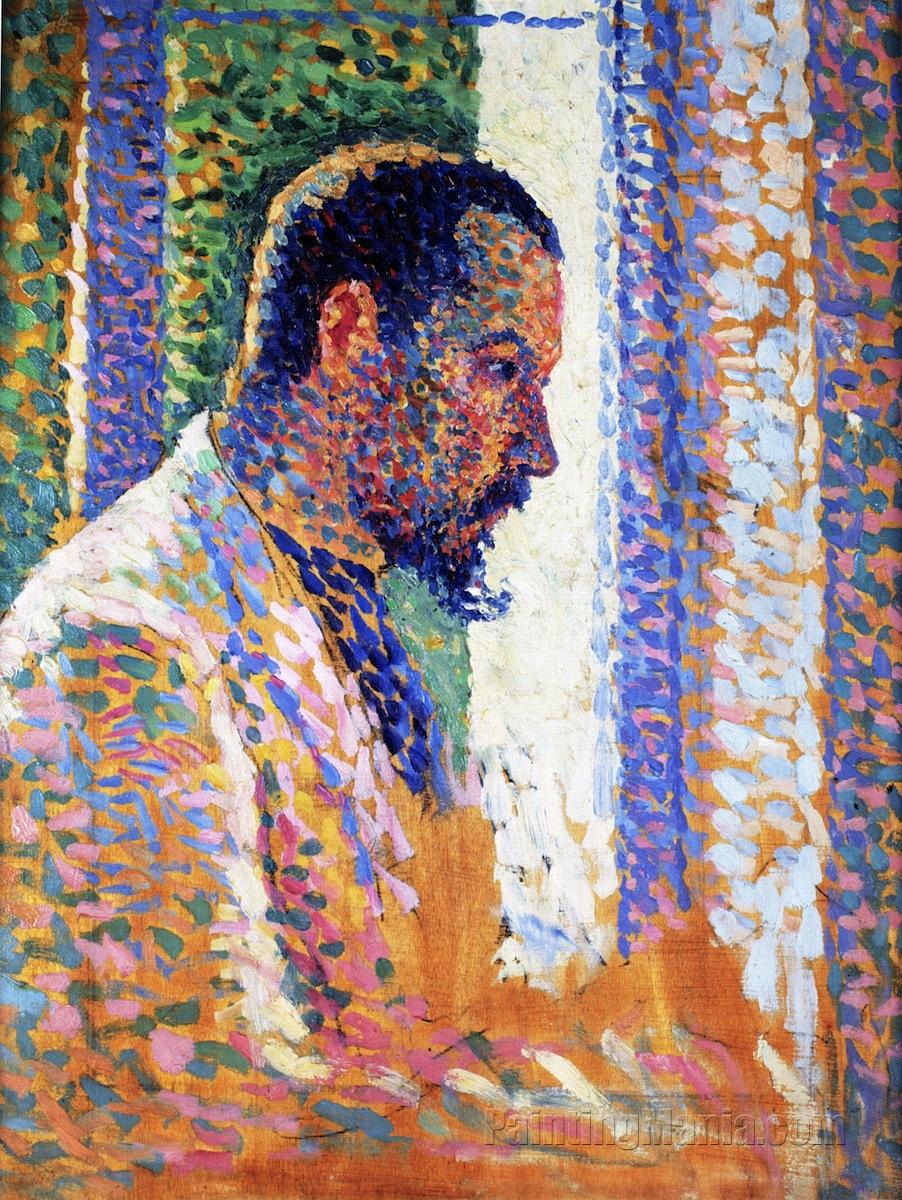 PAUL GAUGUIN (1848—1905)
PAUL GAUGUIN (1848—1905)
Born in Paris. He spends the years 1851—55 with his family in the capital of Peru, Limie. After graduating from school, he is a sailor for several years; w 1871 r "becomes an official of Bertina's bank in Paris, gaining a favorable material situation. He then marries a Danish woman, Matthew Gad. Having made friends with Emil Schuffenecker, a colleague from Bertin's bank and an amateur painter, receives his first painting tips from him.
He did not take part in regular art studies. In January 1885 r. he resigns from his position in the bank and devotes himself exclusively to painting.
He began his painting work as an impressionist and in the years 1880-86 he participated in the exhibitions of the Impressionist group.. His distinct style is shaped in 1888 r., during his stay in Pont-Aven in Brittany, in close collaboration with Emil Bernard. They describe their painting assumptions as cloisonnisme and synthetism. The first of the names means closing the forms with a strongly underlined contour, as in stained glass or cloisonné enamels; the second - to simplify the form, its synthesis. It is connected with the rejection of painting from nature, with the arbitrary application of color, and contrasting large planes of pure color without intermediate tones. The program is complemented by the rejection of the traditional perspective and a conscious search for decorative qualities of the canvas.
Gauguin is soon surrounded by a group of friends, students and followers, first in Pont-Aven, and then in 1889 r. in Le Pouldu. They belong to her, except Bernard and Louis Anquetin, who were to some extent co-creators of new concepts (their ideas were partially earlier, but it was only Gauguin's strong individuality that developed them and imposed them on others), Charles Laval, Schuffenecker, Daniel de Monfreid, Chamaillard, Moret, Maufra, Swiss Cuno Amiet, Holender Meyer de Hahn i in. Paul Serusier was, as it were, a link between the School of Pont-Aven and the newly formed Nabis group. The first exhibition of the School of Pont-Aven (The Painting Exhibition of the Impressionist and Synthetist Group) took place in January 1889 r. on the grounds of the Universal Exhibition on the Champs de Mars square in Café Volpini. After Gauguin left France, the group broke up.
Gauguin's trip to the Pacific Islands was not only the result of disappointment with the public and critics, or an act of the artist's despair, unable to make a living on its art. First of all, it was a search for primeval nature and primal living conditions, away from European civilization. And however the detachment was not and could not be complete, new living conditions became a strong stimulus for developing and crystallizing the artist's talent.
Gauguin's poetic and symbolic tendencies deepened in these years, the compositions take on the features of monumentalism, but the basic elements of the old program are developed and implemented by the artist throughout his life.
His writing legacy is abundant. Covers a number of articles from the years 1891 i 1894—95, published in Parisian magazines, articles published in Papeete, Tahiti, 1899-1900, magazine ,,Smile”, published there by Gauguin himself in the years 1899-1900, and finally, hen volumes of tales-memories from Tahiti and the Marquesas, containing m. in. very interesting statements about painting, and finally, copious correspondence. A number of statements have remained in manuscripts to this day.
